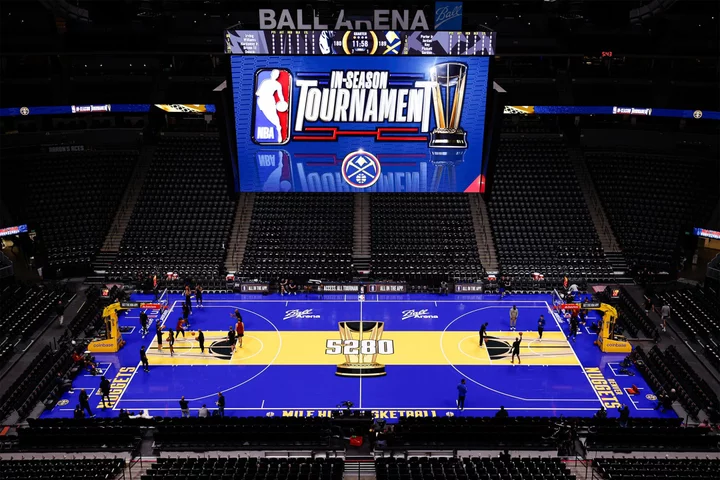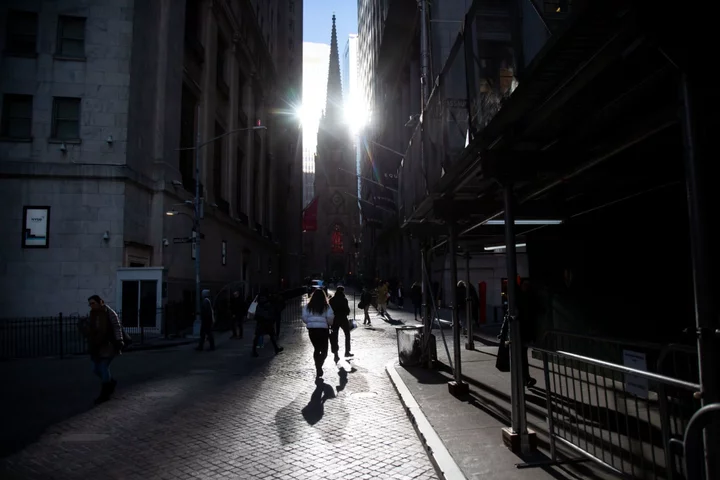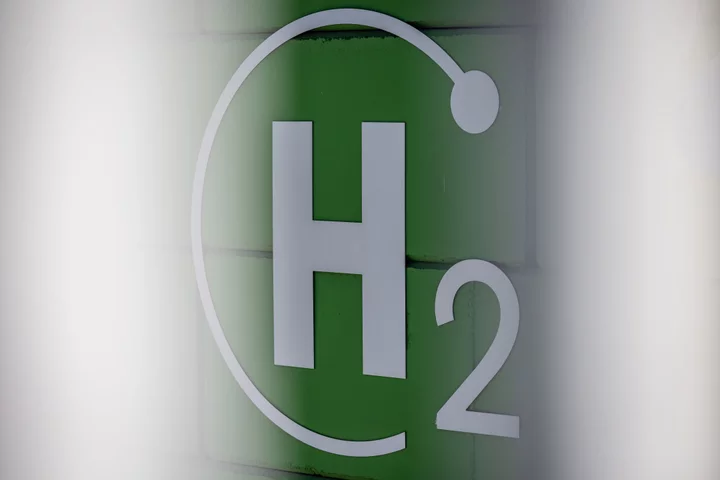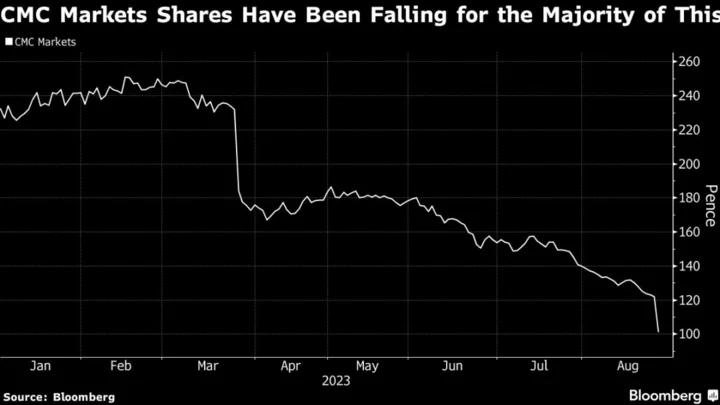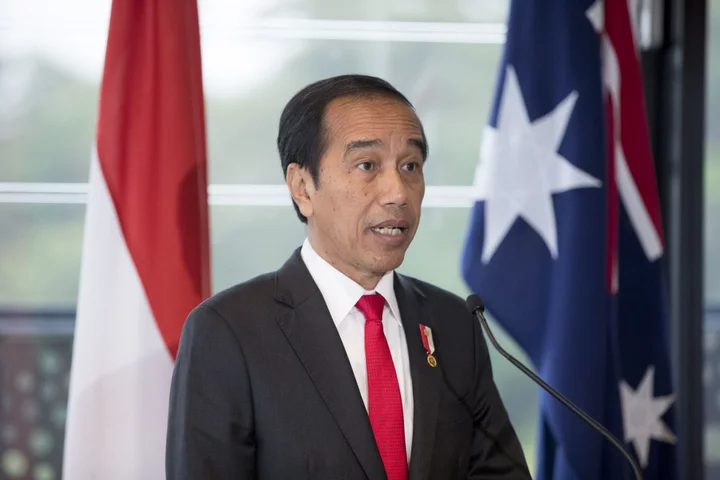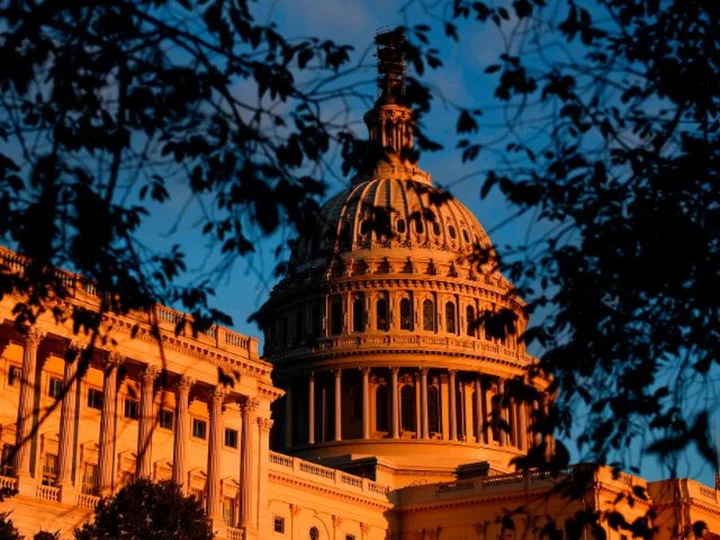If you happened to tune in to an NBA game in November on a Tuesday or Friday night, you might have noticed that the court looked different — with every inch of wood painted, and a broad stripe running through the middle from baseline-to-baseline. The special paint jobs, as you probably figured out soon thereafter, are for the NBA’s new In-Season Tournament.
The league has added a new wrinkle to its early season by dividing its 30 teams into six groups of five and having them play a tournament that will culminate with a championship in Las Vegas on Dec. 9. The group stage of the IST, as it’s maybe not quite yet known, was woven into the regular season schedule in November, ending last Tuesday with the field winnowed down to eight teams that’ll play in the knockout rounds this coming week.
Modeled after cup competitions in European football, the IST is meant to add some spice to a sometimes bland stretch of the NBA calendar. At 82 games spread across seven months, the season can be a slog for players and viewers alike. For casual fans, it’s easy enough to wait until Christmas Day, when the league makes a tradition of scheduling five marquee games for national TV, to start paying attention. The mid-season tournament, in theory, gives them a reason to tune in sooner by adding what NBA Commissioner Adam Silver calls “ games of consequences.”
The premise is that players will care more about winning the tournament than they did about random games over the first third of the season. As an incentive, there’s a new trophy called the NBA Cup and some old-fashioned money. Each player on the winning team gets $500,000, with $200,000 each going to the runners-up, $100,000 for semi-final losers, and $50,000 for quarterfinals losers. That’s pocket change for the league’s stars but a meaningful payday for a player making the league minimum of about $1 million.
The early viewership numbers suggest that making the NBA more European is working. The tournament’s Tuesday night games on TNT averaged 1.5 million viewers during the group stage, according to the network, up 16% from comparable telecasts a year ago. ESPN said its Friday night IST games also averaged 1.5 million viewers, a 20% increase over games in the same windows last year.
Those higher numbers, according to William Mao, a media consultant at Octagon Inc., are partly a reflection of increased promotion from the league and its broadcasters. The question now is whether the excitement surrounding the IST takes some of the shine off the remainder of the regular NBA season. “Are you taking from one hand and giving to the other, in terms of the rest of the games that you are now implicitly saying are less consequential?” said Mao.
The tournament is part of a broader effort by the league to shore up the appeal of its product ahead of its next round of national TV deals. The league’s current partners, Walt Disney Co., home of ABC and ESPN, and Warner Bros. Discovery Inc., owner of TNT, are soon to enter an exclusive negotiating window to renew rights agreements that expire in 2025. The two pay about $2.7 billion per year combined, a number that many expect to at least double in the next set of deals, which may well include tech giants such as Amazon, Apple or Netflix.
While the NBA remains a very attractive media property with a relatively young audience, it cannot afford to be complacent. As Silver tacitly acknowledged, some regular season games don’t seem to matter that much, with players lackadaisically trading buckets until the final moments of the fourth quarter. Teams in recent years have begun resting star players in an effort to prevent injuries and burnout, and to better prepare for long playoff runs, a practice known as load management. Meanwhile, teams with no chance of making the playoffs have been known to bench their best players to intentionally lose more games, a practice known as tanking, in an effort to maximize their chances of a higher pick in the next year’s draft.
Load management, tanking and early-season malaise all damage the NBA’s core product. Shortening the season would arguably help, but owners are not about to slash their own inventory—leaving themselves with fewer seats and programming hours to sell—and players are unlikely to agree to pay cuts that would likely come with any reduction in their workload.
So the NBA has turned to other measures. In 2020 it introduced a play-in tournament to expand the playoff field and give more teams a reason to compete deeper into the season. Before this season, the league beefed up its load management restrictions, including rules requiring star players to be available for national TV games unless they’re injured. The In-Season Tournament is the most dramatic intervention yet.
As a bonus, the tournament also creates a distinct property to sell in TV rights negotiations, while only adding a single game to the existing calendar. (The first 66 games in the tournament — all but the championship — also count as regular-season games.) Now, instead of a few dozen games in the dullest part of the season, a broadcaster or streaming service can get a cup tournament complete with specially painted floors and a trophy. Netflix, according to Sports Business Journal, is said to be interested in doing just that.
As Major League Baseball demonstrated this past season with rule changes that made games shorter and more action packed, major US sports leagues cannot stand pat and expect new generations of fans to adopt their parents’ allegiances and habits. To compete in an attention economy increasingly built around rapid-fire dopamine hits on social media feeds, they’ll need to get creative.
Sign up for Bloomberg’s Business of Sports newsletter for the context you need on the collision of power, money and sports, from the latest deals to the newest stakeholders. Delivered weekly.

